Body of Written Work
Cycle 1
Eros:
The Mystical and the Sexual
Books:
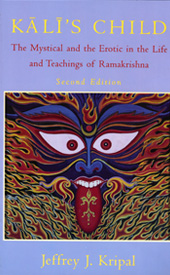
Kali's Child: The Mystical and the Erotic in the Life and Teachings of Ramakrishna (Chicago: University of Chicago Press, 1995; 2nd ed., 1998).
This is a close textual study, based on the original Bengali biographies and sayings-collections, of the great Hindu saint Ramakrishna (1836-1886) from the dual perspectives of the Hindu Tantra and psychoanalysis. I demonstrate how the Bengali texts were systematically censored when they were translated into English in 1942, and how these censored "secret talk" passages reveal a sublimely erotic, really homoerotic, mysticism that resonates in rich and complicated ways with the Tantric traditions of India, the winged eros of Plato's Symposium and Phaedrus, and the libidinal psychology of Freud and his central category of sublimation or "making sublime." The mystical and the erotic, I argue, are two sides of the same coin. They cannot be separated. For my responses to some of the controversies surrounding this book, see http://www.ruf.rice.edu/~kalischi/. For a full, and finally accurate, assessment of the controversies, and this from an accomplished Bengali scholar, see Rajagopal Chattopadhyaya, Ramakrishna: Kali's Child and Lover (San Jose: Vyasdeb Chatterjee, 2011). Bottom line? Most of the alleged translation 'errors' are not errors at all, the few that are in error are insignificant, and my Tantric interpretations do not always go far enough.

Vishnu on Freud's Desk: A Reader in Psychoanalysis and Hinduism, T. G. Vaidyanathan
and Jeffrey J. Kripal, eds. (New Delhi: Oxford University Press, 1998).
Kali's Child had lots of enthusiastic fans, and lots of harsh critics. One of the fans was a well-known Indian literary critic named T.G. Vaidyanathan. "T.G.V.," as he liked to be called, wrote and asked me to help him finish a long-standing project that he was engaged in on the dialogue between psychoanalysis and Hinduism. We worked on this project together for a number of years, and this volume was the result. T.G.V. passed away a few years later. I deeply miss his friendship, humor, and fierce support. For this volume, I contributed an Afterword, based on the cultural psychology of anthropologist Richard Shweder, entitled "Hinduism and Psychoanalysis: Thinking Through Each Other." The title of the book comes from Christiane Hartnack’s contribution, which is in turn based on the historical fact that the Indian Psychoanalytic Society (founded in 1922) sent Freud a statue of the Hindu deity Vishnu on the occasion of his seventy-fifth birthday in 1931 (Freud's desk was famously covered with images of ancient Egyptian, Greek, and Roman deities). The Freud Archives in London kindly gave us permission to reproduce a photo of this image. We also reproduced the accompanying letter and a translation of the Sanskrit invocation that the Society sent to Freud. It began: "Om—Obeisance to the Absolute Self." We dedicated the book to Girindrasekhar Bose, the Bengali psychoanalyst who began this dialogue on the Indian side.
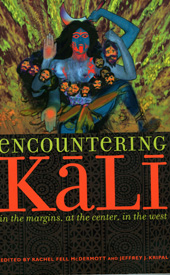
Encountering Kali: In the Margins, at the Center, in the West, Rachel Fell McDermott and Jeffrey J. Kripal, eds. (Berkeley: University of California Press, 2003).
This volume emerged from a conference at Barnard College and Columbia University that Rachel Fell McDermott and I co-directed in 1996. It focuses on the innumerable ways that the goddess Kali "dances" in both the margins and centers of the Hindu traditions and their multiple fusions with Western cultures and religions. Much in line with my earlier work, I wrote an essay for this volume entitled "Kali in the Psychoanalytic Tradition: Or Why the Tantrika Is a Hero." It is another attempt on my part to show how Tantra is "the psychoanalysis of India" and psychoanalysis is "the Tantra of the West," with all the complexities, nuances, and gaps that such a claim involves. Here I explore the history of discussions of Kali’s iconography and mythology, with a special focus on the theme of male decapitation, in psychoanalytic writers from early figures like James Bissett Pratt, Romain Rolland (friend and admirer of Sigmund Freud), and Girindrasekhar Bose, to contemporary writers like Gananath Obeyesekere, Sudhir Kakar, Carmel Berkson, and Sarah Caldwell. The essay ends with some concluding reflections on "Why the Tantrika Is a Hero" and "Why the Psychoanalytic Theorist Is Not a Demon."
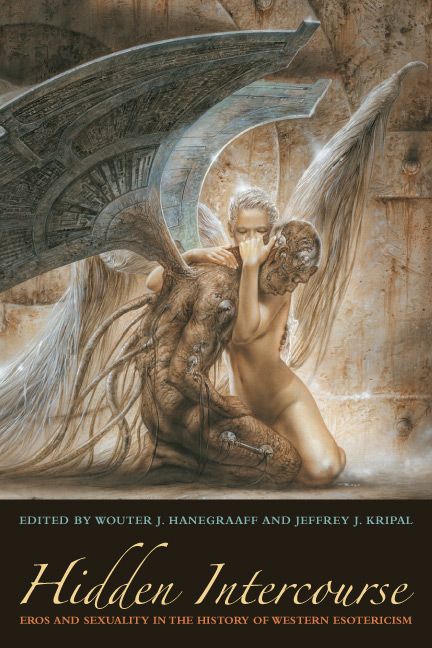
Wouter J. Hanegraaff and Jeffrey J. Kripal, eds., Hidden Intercourse: Essays on Eros and Sexuality in the History of Western Esotericism (Leiden: E.J. Brill, 2008; New York: Fordham University Press, 2010).
This volume emerged from a four-year symposia series on Western Esotericism that Wouter Hanegraaff and I co-directed at the Esalen Institute. One of those symposia was dedicated to the topic of sexuality in the history of Western esotericism. Hence this book. I highly recommend this volume as a definitive demonstration of just how intertwined the erotic and the mystical are in the history of religions in the West, particularly in their more esoteric and heterodox modes. I wrote an essay for this volume entitled ‘The Roar of Awakening: The Eros of Esalen and the Western Transmission of Tantra,’ which restated my thesis, developed most fully in Esalen, that the twentieth-century American appropriation of Asian religions ‘reversed itself’ or ‘flipped over’ around 1950. Whereas in the first half of the century, a strong preference for idealist, ascetic, or world-renouncing traditions was evident (think Advaita Vedanta and monastic forms of Buddhism), a strong preference for antinomian or world-friendly Tantric traditions was evident in the second half, beginning more or less with the Beat poets and the counterculture (think Zen and Vajrayana Buddhism, Chinese Daoism, Shakta Tantra, Kashmiri Shaivism, kundalini yoga, and so on).
Sample Essays:
"Kali's Tongue and Ramakrishna: 'Biting the Tongue' of the Tantric Tradition," History of Religions 34/2 (1994).
"Re-membering a Presence of Mythological Proportions: Psychoanalysis and Hinduism," for William B. Parsons and Diane Jonte-Pace, eds., Mapping Religion and Psychological Studies: Contemporary Dialogues, Future Prospects (New York: Routledge Press, 2000).
“Kali in the Psychoanalytic Tradition: Or Why the Tantrika Is a Hero,” in McDermott and Kripal, eds., Encountering Kali (Berkeley: University of California Press, 2003).
“The Christology and Psychology of the Kiss: Re-reading Bernard of Clairvaux’s Sermones Super Cantica Canticorum,” in J.A. Belzen and A. Geels, eds., Mysticism: A Variety of Psychological Perspectives (Amsterdam: Rodopi, 2003).
“Phallus/Vagina,” Encyclopedia of Religion, 2nd edition, ed. by Lindsay Jones (New York: Macmillan, 2004).
“Sexuality: An Overview (Further Perspectives),” Encyclopedia of Religion, 2nd edition, ed. by Lindsay Jones (New York: Macmillan, 2004).
“Riding the Dawn Horse: Adi Da and the Eros of Nonduality,” in Thomas Forsthoefel and Cynthia Anne Humes, eds., Gurus in America (Albany: SUNY, 2005).
Sexuality and Eroticism,” Handbook of Religion and the Emotions, ed. by John Corrigan (New York: Oxford University Press, 2006).
“The Roar of Awakening: The Eros of Esalen and the Western Tantric Transmission,” in Wouter J. Hanegraaff and Jeffrey J. Kripal, eds., Hidden Intercourse (2008).
“From Paradise to Paradox: The Psychospiritual Journey of John Heider,” in Jacob Belzen, ed., Autobiography and the Psychology of Religion (Amsterdam: Rodopi, 2009).
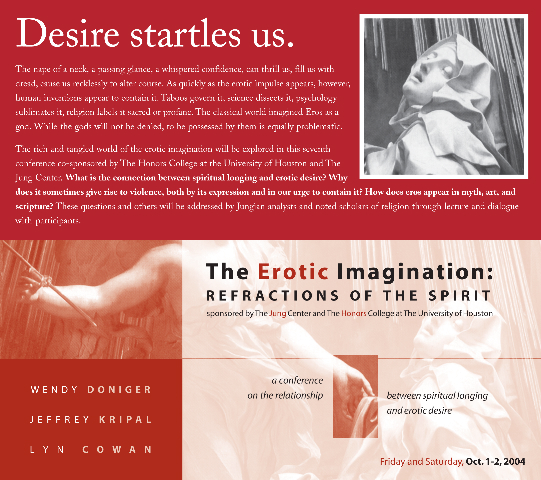
![]()
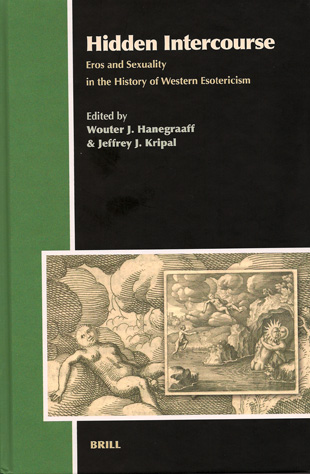
![]()

![]()
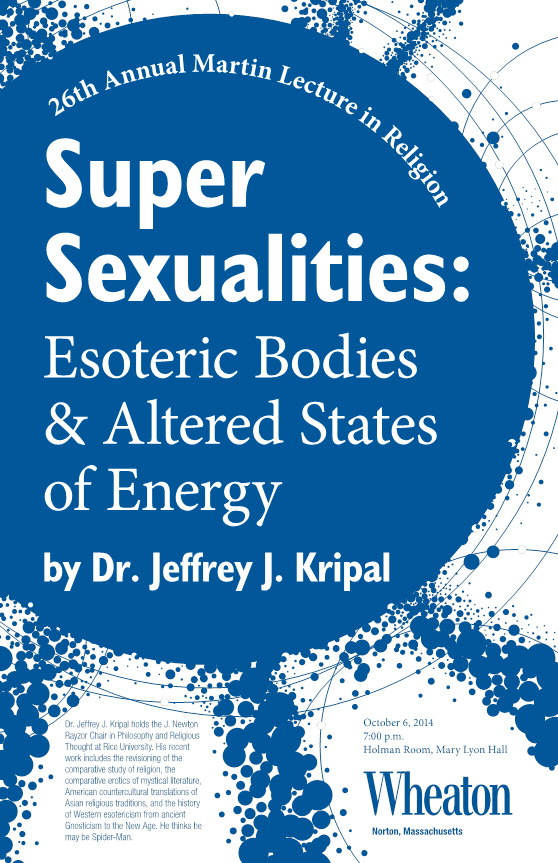
Cycle 2
Gnosis:
Critical Theory and Transcendence
Books:
 Crossing Boundaries: Essays on the Ethical Status of Mysticism, G. William Barnard and Jeffrey J. Kripal, eds. (New York: Seven Bridges Press/Chatham House, 2002).
Crossing Boundaries: Essays on the Ethical Status of Mysticism, G. William Barnard and Jeffrey J. Kripal, eds. (New York: Seven Bridges Press/Chatham House, 2002).
This volume emerged out of a long-standing debate about the relationship between mysticism and ethics that I have had with my close colleague and friend G. William Barnard of Southern Methodist University. Put much too simply, I hold that there is no necessary relationship between the two, and Bill holds that there is. It’s much more complicated than that, of course. Hence this collection of essays. Unfortunately, the press that published the volume went out of business shortly after the book appeared, so it is almost impossible to find now—a rare book! I wrote three essays for this volume, all of which develop my thesis that, although monistic mystical experiences may well grant access to deeper strata of reality (I suspect they do), such states of consciousness do not necessarily produce or lead to ethical behavior and are often, indeed, catalyzed by entirely non-moral or even immoral events (like car wrecks, antinomian rituals, and sexual trauma). Monism, after all, implies an erasure or annihilation of ultimate difference, whereas moral norms require multiple moral subjects and elaborate social structures to exist at all.
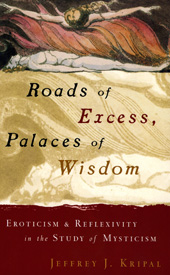 Roads of Excess, Palaces of Wisdom: Eroticism and Reflexivity in the Study of Mysticism (Chicago: University of Chicago Press, 2001).
Roads of Excess, Palaces of Wisdom: Eroticism and Reflexivity in the Study of Mysticism (Chicago: University of Chicago Press, 2001).
This book takes the ideas and methods of Kali's Child and applies them to both male mysticisms from around the world (Christian, Islamic, Hindu, and Jewish) and to modern scholars of mysticism. The title comes from a "Proverb of Hell" of the English poet William Blake, who wrote in The Marriage of Heaven and Hell that, "The road of excess leads to the palace of wisdom." In a similar spirit, I reflect on how the modern study of mysticism has often been inspired by the excessive states and mystical experiences of the scholars themselves. More specifically, I suggest that these "roads of excess" are often marked by erotic engagements with text and tradition that carry within themselves important theoretical insights into both the historical mystics and our own critical engagements with their texts. This book also includes five "secret talk" sections, essentially a spiritual autobiography, in which I describe and psychoanalyze my own mystical experiences. This book remains my fullest statement about why "heterosexuality is heretical" in the context of male mystical traditions that employ erotic registers. The same thesis was later crystallized in "The Apocryphon of the Beloved" (my essay on the sexualities of Jesus) and in "Logoi Mystikoi or How to Think Like a Gnostic," both of which appeared in The Serpent's Gift.
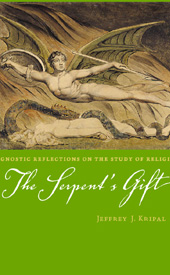 The Serpent’s Gift: Gnostic Reflections on the Study of Religion (Chicago: University of Chicago Press, 2006).
The Serpent’s Gift: Gnostic Reflections on the Study of Religion (Chicago: University of Chicago Press, 2006).
This book takes the ideas and methods of Roads of Excess and "performs" them in a more poetic and somewhat bolder mode. I begin by observing that as recent domestic and geopolitical events have become increasingly dominated by intolerant forms of religious thought and action, the critical study of religion continues to find itself largely ignored in the public square. Caught between those who assert that its principle purpose is to reflect the perspectives of those who believe (the model of representation and benevolent faith) and those who assert that its only proper place is to expose these same worldviews as deceptive social and economic mechanisms of power (the model of reductionism and reason), the discipline has generally failed to find a truly audible voice. Rejecting both of these modes of knowing as insufficient to the radical subject that is religion, I offer here another possibility, that of the serpent's gift. Such a gift hisses a form of gnosis, that is, a deeply critical approach to religion that is at the same time profoundly engaged with the altered states of consciousness and energy that are naively literalized by the proponents of faith and too quickly dismissed by the proponents of pure reason. Beware of this book. It bites.
 Comparing Religions (Oxford: Wiley-Blackwell, 2014)
Comparing Religions (Oxford: Wiley-Blackwell, 2014)
Comparing Religions is a next-generation textbook that teaches the art and practice of comparison as a vital and necessary skill in our modern globalizing world. By acknowledging up front and then working with the very real spiritual, social, and emotional impact such a practice can have on individuals through a model “initiatory” structure, the textbook provides the individual reader or classroom community that chooses to take up this practice with an effective map and a clear three-part process. The result of all of this is a “textbook initiation” that will guide, inspire, and challenge those who wish to think seriously about religious pluralism in the modern world, from the new student coming to these materials for the first time to seasoned professionals who seek to engage the comparative method anew. Students, journalists, medical, legal, business, media, and military professionals, religious leaders, social workers and activists, psychotherapists, or the simply curious—all will find here an expert guide to “comparing religions.”
Sample Essays:
"The Visitation of the Stranger: Some Mystical Dimensions of the History of Religions," CrossCurrents 49/3 (Fall 1999).
"Teaching Hindu Tantrism With Freud: Psychoanalysis as Critical Theory and Mystical Technique," in Diane Jonte-Pace, ed., Teaching Freud in Religious Studies (New York: Oxford University Press, 2003).
“Being John Woodroffe: Mythical Reflections on the Postcolonial Study of the Hindu Tantra,” in José Ignacio Cabezón and Sheila Devaney, eds., Anxious Subjectivities: Personal Identity, Truth, and the Study of Religion (New York: Routledge, 2004).
“Comparative Mystics: Scholars as Gnostic Diplomats,” in Jeffrey M. Perl, ed., Talking Peace with Gods, Symposium on the Reconciliation of Worldviews, Part 1, Common Knowledge, 10:3 (Fall 2004).
“Liminal Pedagogy: The Liberal Arts and the Transforming Ritual of Religious Studies,” in James Boyd White, ed., How Should We Talk About Religion? Perspectives, Contexts, Particularities (South Bend: University of Notre Dame Press, 2006).
“Re-membering Ourselves: Some Countercultural Echoes of Contemporary Tantric Studies,” lead-essay of inaugural issue, Journal of South Asian Religion 1/1, summer 2007).
“From Altered States to Altered Categories (and Back Again): Academic Method and the Human Potential Movement,” University of Chicago Divinity School Religion and Culture Web Forum, (April 2007).
"Taking the Purple Pill: On the Paradoxical Pedagogy of Mysticism," for Blackwell Compass web-site.
"Being Blake: Antinomian Thought, Counterculture, and the Art of the History of Religions," in David Haberman and Laurie Patton, eds., Notes from a Mandala: Essays in the History of Religions in Honor of Wendy Doniger (University of Delaware Press, 2010).
"Secrets in the Seats: The Erotic, the Paranormal, and the Free Spirit," for William B. Parsons, ed., Teaching Mysticism (New York: Oxford University Press, 2011).
"A Conversation with Jeffrey J. Kripal," Journal for the Study of Radicalism 6:1 (2012)
“On Reason, Religion, and the Real,” a Conclusion for Lola Williamson and Ann Gleig, eds., Homegrown Gurus: From Hinduism in America to American Hinduism (Albany: SUNY, 2013).
Foreword for Esotericism in African American Religious Experience: “There Is a Mystery,” ed. by Stephen C. Finley, Margarita Simon Guillory, and Hugh R. Page, Jr. (Sheffield: Equinox, 2014).
“The Traumatic Secret: Bataille and the Comparative Erotics of Mystical Literature,” in Jeremy Biles and Kent Brintnall, eds., Negative Ecstasies: Georges Bataille and the Study of Religion (New York: Fordham University Press, 2015).
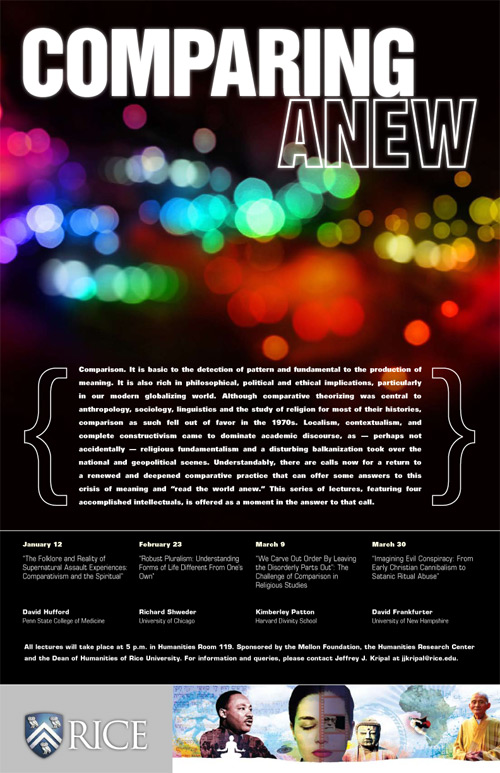 |
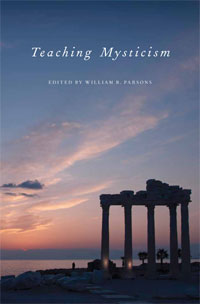 |
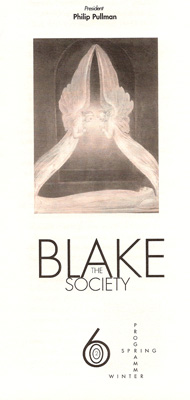 |
 |
||
Cycle 3
Nous:
The Matter of Mind and the Mind of Matter
Books:
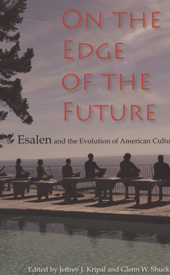 On the Edge of the Future: Esalen and the Evolution of American Culture, Jeffrey J. Kripal and Glenn W. Shuck, eds. (Bloomington: Indiana University Press, 2005).
On the Edge of the Future: Esalen and the Evolution of American Culture, Jeffrey J. Kripal and Glenn W. Shuck, eds. (Bloomington: Indiana University Press, 2005).
This volume emerged out of my earliest work on the history of Esalen, including a symposium that I led at Esalen on the history of the institute. Glenn Shuck of Williams College worked with me on this volume. I wrote an essay for this volume on co-founder Michael Murphy’s textual encounter with the Indian spiritual teacher Sri Aurobindo through the former’s education at Stanford University with the professor of comparative religion Frederic Spiegelberg. Entitled "Reading Aurobindo from Stanford to Pondicherry: Michael Murphy and the Hindu Tantric Transmission (1950-57)," this was the 'seed essay' for my later history of the Esalen Institute. This same essay also functions as the earliest expression of my Tantric transmission thesis summarized above under Hidden Intercourse, which was most succinctly stated later in my essay, "Re-membering Ourselves: Some Countercultural Echoes of Contemporary Tantric Studies."
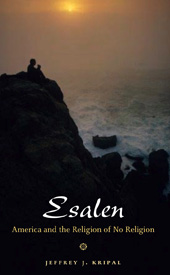 Esalen: America and the Religion of No Religion (Chicago: University of Chicago Press, 2007).
Esalen: America and the Religion of No Religion (Chicago: University of Chicago Press, 2007).
This is a historical study of the American human potential movement: its historical roots in Emerson's Transcendentalism, Whitman's ecstatic-erotic poetry, Wilhelm Reich's orgone, Aldous Huxley's writings on the perennial philosophy and psychedelic revelation, and early charismatic teachers like Gerald Heard, Alan Watts, and the Beat poets; its creation in the early 1960s in Big Sur and the Bay Area; its history of political and social activism, primarily via Soviet-American relations, in the 1970s and 80s; and its constant engagement with the history of mysticism, science and religion, psychical research, and Asian religions. I give special attention in the book to what I call "the Tantric transmission," that is, the striking preference that the human potential movement and the American counterculture showed for the erotic, heterodox, Tantric traditions of Buddhism, Hinduism, and Taoism (as opposed to their orthodox or normative forms). I also trace the various mentors and metaphysical movements that eventually resulted in the popular phrase, "I am spiritual, but not religious." Of particular importance here is the Stanford professor of comparative religion Frederic Spiegelberg, who had a profound mystical experience of God in and as the cosmos while walking in a wheat field as a young seminarian. Spiegelberg had to flee Nazi Germany for his ideas and later taught both future founders of Esalen (while they were still undergraduates at Stanford University) a particular mystical theology that he crystallized in the paradoxical phrase, "the religion of no religion." Hence my subtitle.
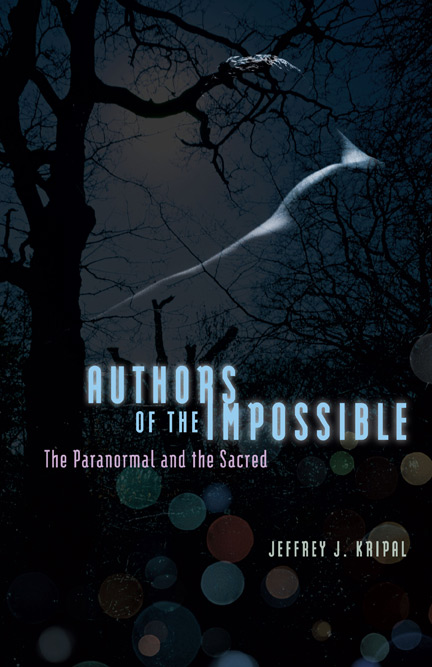 Authors of the Impossible: The Paranormal and the Sacred (Chicago: University of Chicago Press, 2010).
Authors of the Impossible: The Paranormal and the Sacred (Chicago: University of Chicago Press, 2010).
As I spoke to individuals and historical figures while researching Esalen, I kept encountering perfectly serious and perfectly sincere stories of anomalous experiences that I could not account for with my training. I wrote this book in order to call for a space in the study of religion for the anomalous, the psychical, the paranormal—the utterly and completely strange. I also suggest that at least some instances of these bizarre phenomena are amenable to humanistic inquiry in the sense that such experiences often display profound "semiotic" or "hermeneutical" dimensions. Put more simply, paranormal events often appear to reveal a world that is about meaning and not just matter, about words and not just numbers. Put differently again, the paranormal often works a lot like a text or a story in which one finds oneself caught and which one struggles, with great difficulty, to read. Hence my original subtitle for the book (which remains the subtitle of the film version): "Reading the Paranormal Writing Us." The book was recently translated into Spanish and published by Kairos as Autores de lo Imposible (see the beautiful cover below).
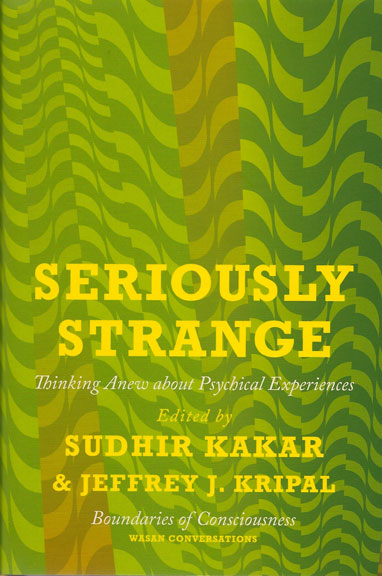 Sudhir Kakar and Jeffrey J. Kripal, eds., Seriously Strange: Thinking Anew about Psychical Experiences (New York: Viking, 2012).
Sudhir Kakar and Jeffrey J. Kripal, eds., Seriously Strange: Thinking Anew about Psychical Experiences (New York: Viking, 2012).
This is a collection of ten essays on how to think rigorously and positively about psychical phenomena from the fields of neuroscience, psychoanalysis, psychiatry, the psychology of religion, the philosophy of religion, parapsychology, and physics. It emerged from a conference that Sudhir Kakar and I co-hosted on Wasan Island on Lake Muskoka in Ontario, Canada, in August 2010 under the generous leadership and sponsorship of the Brueninger Foundation. It is the second volume of a series led by Sudhir on "Boundaries of Consciousness." The title is meant to convey two basic ideas. First, that a particular class of very common human experiences, which we today call "psychical" or "paranormal" (but which earlier eras would have labeled "magical" or sacred), cannot be fit into the reigning models of science or orthodox religion. They are seriously strange. Out of place. Offensive. Fascinating. Second, that the rogue nature of such events is itself intellectually important, and perhaps really important, and cannot be brushed aside—as is so often done—as insignificant, anecdotal, delusional, fraudulent, and so on. It is seriously strange. In a word, this serious strangeness is meaningful. It thus cries out to be interpreted, to be theorized, to be incorporated into new forms of knowledge and human possibility.
Sample Essays:
"The Rise of the Imaginal: Psychical Phenomena on the Horizon of Theory (Again)," Religious Studies Review 33:3 (2007).
“From Emerson to Esalen: America’s Religion of No Religion,” The Chronicle of Higher
Education, April 13, 2007.
"Brave New Worldview: The Renaissance of Aldous Huxley," Chronicle of Higher
Education, December 12, 2008.
"Perspectives on 'Sacred Moments' in Psychotherapy," with James W. Lomax, M.D., and Kenneth I. Pargament, Ph.D, American Journal of Psychiatry 168:1 (January 2011).
"Reading Russian Mystical Literature Upside Down," Conclusion commissioned for Birgit Menzel, Michael Hagemeister, and Bernice Glatzer Rosenthal, eds., The New Age of Russia: Occult and Esoteric Dimensions (Munich: Kubon and Sagner, 2012).
"Introduction: Thinking Anew About Psychical Experiences," in Kakar and Kripal, eds., Seriously Strange.
“Visions of the Impossible: how ‘fantastic’ stories unlock the nature of consciousness,” The Chronicle Review, The Chronicle of Higher Education, April 4, 2014, feature cover essay.
“An Island in Mind: Aldous Huxley and the Neurotheologian,” for Dinesh Sharma, ed., Psychoanalysis, Culture, and Religions: Essays in Honor of Sudhir Kakar (New Delhi: Oxford University Press, 2014).
“Authors of the Impossible: What the Humanities Have to Offer Parapsychology,” J. B. Rhine Plenary Address, Parapsychological Association Meeting 2014, in Mindfield 6/3 (fall 2014): 55-63.
“Trance and Transcendence,” The Chronicle of Higher Education, 9 January 2015.

![]()
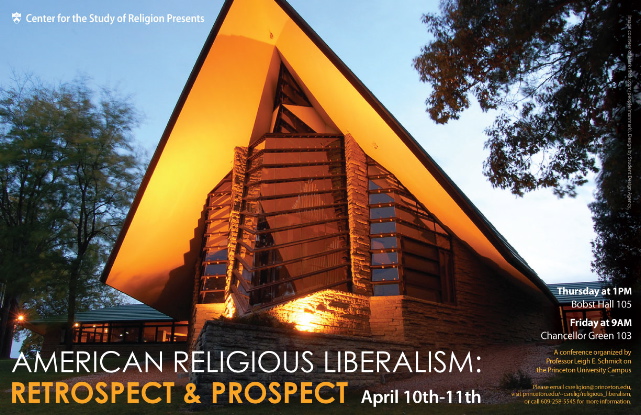
![]()
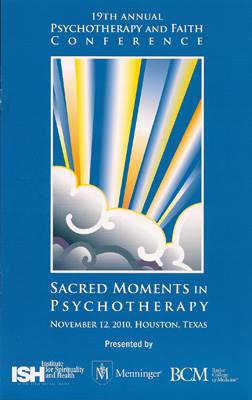
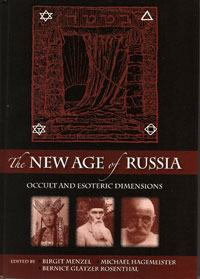
![]()
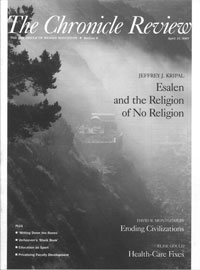
![]()
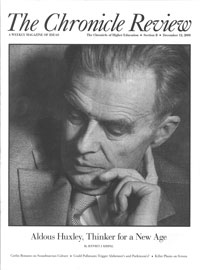
![]()
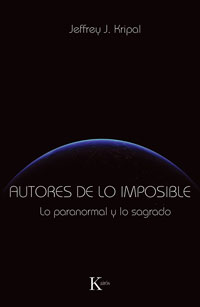
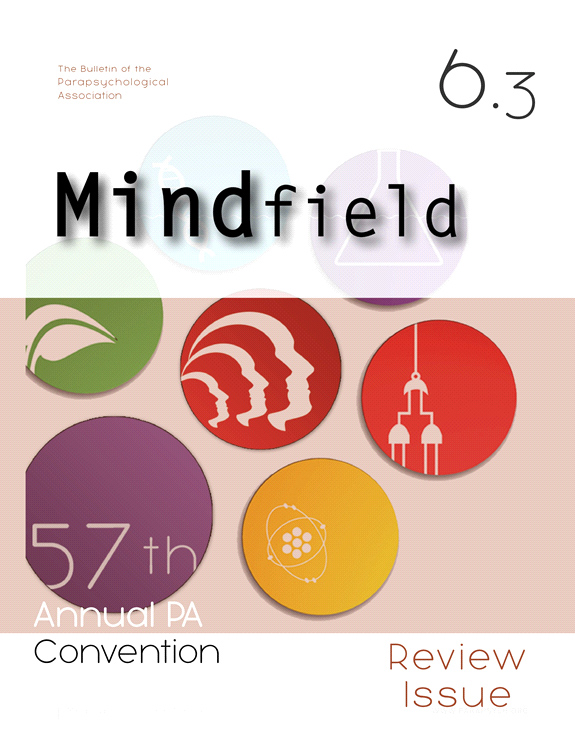
Cycle 4
Theosis:
Other Humanities and the Powers of the Human Form
Books:
 "Esalen and the X-Men: The Human Potential Movement and Superhero Comics," Alter Ego 84 (March 2009).
"Esalen and the X-Men: The Human Potential Movement and Superhero Comics," Alter Ego 84 (March 2009).
I led an Esalen symposium in the spring of 2008 on the relationship between the paranormal and popular culture, with a special focus on science fiction and superhero comics. Among those attending was a "hero" of mine, Roy Thomas. Roy had taken up the editorial mantle, and much of the writing, at Marvel Comics in the early 1970s. It was these comics that I read, and adored, as a boy. Roy asked me to write an essay on the event for his magazine on the history of the comic-book industry, Alter Ego. I incorporated my description of our symposium into an appendix on the human potential movement and superhero comics that I had cut from my Esalen book, which suggests, in effect, that the evolutionary mysticisms that have flowed through Esalen are remarkably similar to the evolutionary mythologies that have come to define the superhero comic book. This was the 'secret appendix' of Esalen (that never appeared there) and the early 'seed essay' of what would later become Mutants and Mystics.
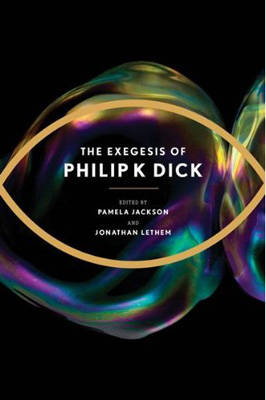 The Exegesis of Philip K. Dick
The Exegesis of Philip K. Dick
I am one of the annotators for the much anticipated publication of The Exegesis of Philip K. Dick, edited by Pamela Jackson and Jonathan Lethem (Houghton Mifflin Harcourt, 2011). The holy grail of Dick studies, The Exegesis is, in its original manuscript form, the 8,000 page private journal of the American sci-fi master Philip K. Dick. Dick experienced a massive metaphysical opening in the winter of 1974. The latter event, which progressed over about two months, was dominated by the plasmic presence of a cosmic being he named VALIS, for Vast Active Living Intelligent System. Dick’s last three novels–often called the Valis Trilogy–orbit around this nous-like Supermind. Erik Davis is working with us here at Rice toward the writing of a Ph.D. dissertation on these same mystical journals, which he helped edit. My deepest gratitude to Erik for including me in this project.
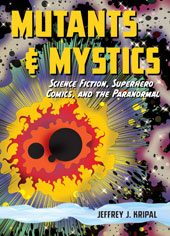 Mutants and Mystics: Science Fiction, Superhero Comics, and the Paranormal (Chicago: University of Chicago Press, 2011).
Mutants and Mystics: Science Fiction, Superhero Comics, and the Paranormal (Chicago: University of Chicago Press, 2011).
This is the book I originally thought I was writing when Authors of the Impossible came out. Whereas Authors focuses on the history of theorizing the paranormal over the last century and a half, Mutants and Mystics focuses on how the paranormal has helped generate the popular cultural genres of pulp fiction, science fiction, and superhero comics during that same period. More specifically, the book hones in on a number of prominent authors and artists (e.g., Alan Moore, Grant Morrison, Ray Palmer, Jack Kirby, Otto Binder, Alvin Schwartz, Philip K. Dick, Barry Windsor-Smith, and Whitley Strieber) and demonstrates how their creative processes were intimately linked to both the earlier histories of Western esotericism (particularly Rosicrucianism, Theosophy, Aleister Crowley, animal magnetism, and psychical research) and their own profound paranormal openings. The book ends with the observation that we cannot possibly acknowledge, much less understand, such events and genres with our present materialist assumptions, that such experiences are literally impossible without the positing of some sort of “soul,” “spirit,” or “Mind.” The Human is Two. This book won a 2011 Prose Award in Media and Cultural Studies.
Sample Essays:
"The Evolving Siddhis: Yoga and Tantra in the Psychical Research Tradition and Beyond," for Knut A. Jacobsen, ed., Yoga Powers: Extraordinary Capacities Attained through Meditation and Concentration (Leiden: E. J. Brill, 2011)
"The Future Human: Mircea Eliade and the Fantastic Mutant," for Norman Girardot and Bryan Rennie, eds., special issue on "Remembering, Reimagining, Revalorizing Mircea Eliade," Archaevs. Studies in History of Religions 15 (2011)
"Reading as Mutation," a Foreword to Whitley Strieber’s What Is to Come (New York: Tarcher/Penguin, 2011).
"Mystics and Mutants: The Paranormal in Pop Culture," The Chronicle of Higher Education, 11 December 2011.
"Mind Matters: Esalen's Sursem Group and the Ethnography of Consciousness," for Ann Taves and Courtney Bender, eds., What Matters? Ethnographies of Value in a (Not So) Secular Age (New York: Columbia University Press, 2012).
"The Dominant, the Damned, and the Discs: The Metaphysical Liberalism of Charles Fort," for Leigh Eric Schmidt and Sally Pomey, eds., American Liberal Religion (Bloomington: Indiana University Press, 2012)
"Les vies secrètes des super-pouvoirs : la littérature de la vision à distance, et l'imaginal," in Antoine Faivre and Silvia Mancini, eds., Techniques du corps et de l'esprit dans les deux Ameriquás: Continuités et discontinuités culturelles (Paris: Éditions Imago, 2012)
"On the Mothman, God, and Other Monsters: The Demonology of John A. Keel," in April DeConick and Grant Adamson, eds., Histories of the Hidden God: Concealment and Revelation in Western Gnostic, Esoteric, and Mystical Traditions (London: Equinox, 2013)
“Better Horrors: From Terror to Communion in Whitley Strieber’s Communion (1987),” Social Research 81/4 (winter 2015): 897-921.
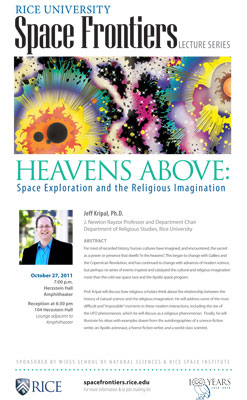
![]()
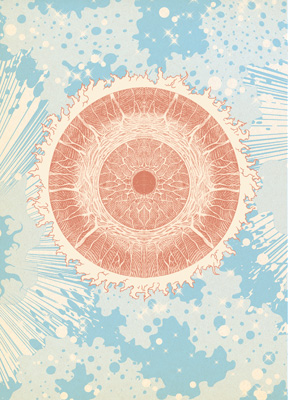
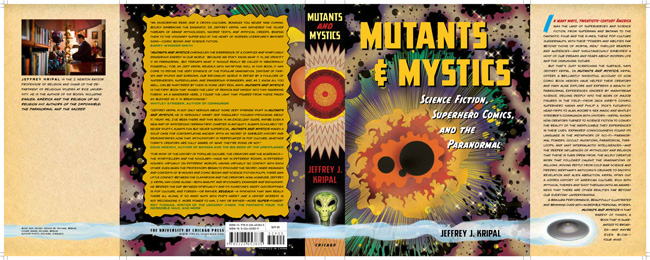
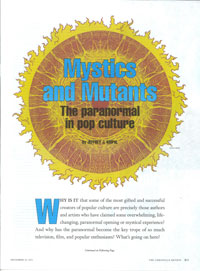
![]()
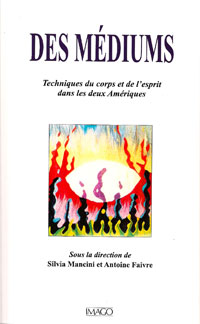
![]()
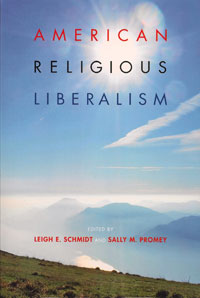
![]()
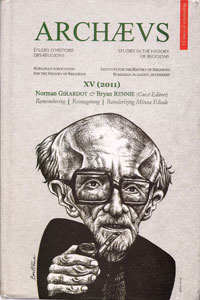
![]()

The super-cool flying saucer vapor trail, the Mutants and Mystics jacket cover, and the cosmic eye were all designed by Michael Brehm and are reproduced here with the permission of the University of Chicago Press. Thanks, Mike, Perry, and, always, David.


